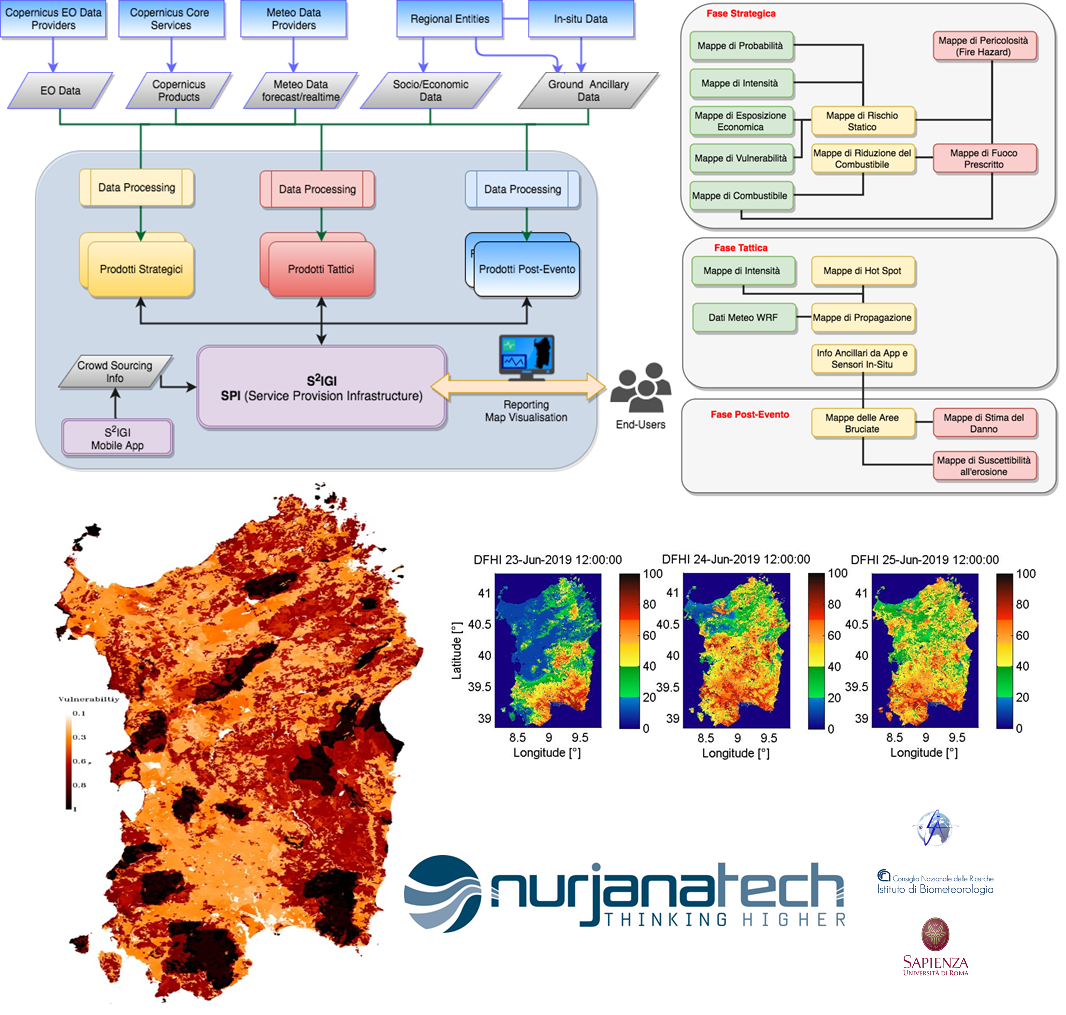Implemented in Sardinia, the S2IGI project is aimed at reducing the environmental and economic damage caused by forest fires. It is doing so by developing a software system to support tactical and strategic interventions for fire prevention and management and post-fire recovery operations. It combines innovative data processing, images provided by new satellite technologies and accurate forecasts from meteorological models. New data is produced every 10 minutes.
- 05 July 2020
The system will allow public and private bodies to detect fires early and predict how they will spread. This, combined with real-time monitoring of the flames via satellite data, will support rational resource deployment to combat fires. The system’s large set of forecasting tools will allow for better planning of strategic prevention actions and more accurate estimates of the severity of fires and damage.
The system’s applications generate maps with a 20 m maximum resolution. The maps display information on ongoing fires, real-time fire propagation simulations, daily risk levels based on weather and vegetation, and the probability and intensity of fires under various meteorological scenarios. Just 2-3 minutes of calculations are needed to show the likely spread of a fire 5 hours hence.
The maps can also integrate data on emergency response resources and findings from monitoring by drones. In addition, the system can be used offline to simulate fires for training of emergency response and civil protection staff.
Economic and environmental losses
Fire has always been a natural component of ecosystems in temperate regions, but forest fires cause huge devastation every year, destroying large amounts of goods and raw materials. Such events increasingly affect the outskirts of urban areas, which are both heavily populated and rich in vegetation. In these areas, fires are particularly hard to manage and the effects on people and property can be much more serious than in forests.
Furthermore, firefighting campaigns, and particularly active control measures, entail huge costs. At the same time, the costs of the environmental consequences of forest fires, such as soil erosion, damage to ecosystems and habitats, and loss of natural beauty in tourist areas, are harder to quantify.
Decision support tools
Key objectives of S2IGI are to help decision makers plan preventive and mitigation work – such as reducing the fuel load – assess the behaviour of fires, determine the type of action needed and optimise the deployment of resources.
It looks to support emergency response services in mapping affected areas, implementing post-fire management measures, quantifying damage and identifying areas at risk of erosion.
An important feature of the project is that it fosters large-scale adoption and exploitation of its outcomes. The system is promoted at local and national level to a diverse audience of institutional stakeholders, the aerospace sector and the research community. Personnel training has been pinpointed as another means of showcasing the system’s benefits as the S2IGI team realise that no innovation can be effective if its prospective users are unaware of its potential or of how to operate it well.
During 2018 and 2019, initial project results were presented internationally at a range of events. These included the Copernicus Academy, the International Geoscience and Remote Sensing Symposium, the Citizen Observatories for natural hazards and water management, the European Geosciences Union General Assembly and the Fire Behaviour and Fuels Conference.
Total investment and EU funding
Total investment for the project “S2IGI – Integrated Satellite System for Management of Fires” is EUR 1 459 956, with the EU’s European Regional Development Fund contributing EUR 544 332 through the “Sardegna” Operational Programme for the 2014-2020 programming period. The investment falls under the priority “Energy Union and Climate”.

